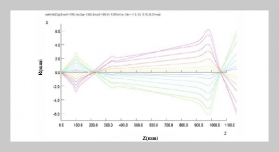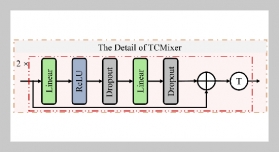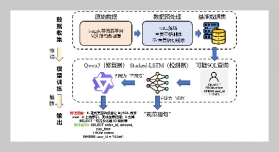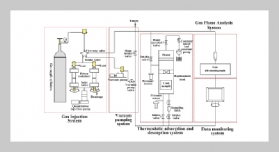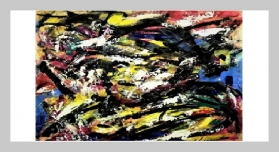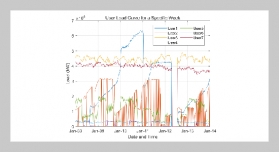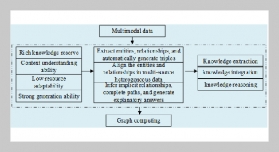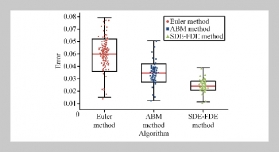REFERENCES
- [1] Gates, C. E., Line Transect and Related Issues, Sampling Biological Populations, eds. Cormack, R. M., Patil, G. P. and Robson, D. S., pp. 71�139 (1979).
- [2] Burnham, K. P., Anderson, D. R. and Laake, J. L., “Estimation of Density from Line Transect Sampling of Biological Populations,” Wildlife Monographs, No. 72, pp. 3�202 (1980).
- [3] Seber, G. A. F., The Estimation of Animal Abundance and Related Parameters, London: Griffin (1973).
- [4] Buckland, S. T., Anderson, D. R., Burnham, K. P., Laake, J. L., Borchers, D. L. and Thomas, L., Introduction to Distance Sampling: Estimating Abundance of Biological Populations, Oxford: Oxford University Press (2001).
- [5] Borchers, D. L., Buckland, S. T. and Zucchini, Estimating Animal Abundance, London: Chapman and Hall (2002).
- [6] Chen, S. X., “A Kernel Estimate for the Density of a Biological Population by Using Line Transect Sampling,” Applied Statistics, Vol. 45, No. 2, pp. 135�150 (1996).
- [7] Mack, Y. P. and Quang, P. X., “Kernel Methods in Line and Point Transect Sampling,” Biometrics, Vol. 54, No. 2, pp. 606�619 (1998).
- [8] Eidous, O., “Kernel Method Starting with Half-Normal Detection Function for Line Transect Density Estimation,” Communications in Statistics, Theory and Methods, Vol. 38, No. 14, pp. 2366�2378 (2009).
- [9] Eidous, O. and Shakhatreh, M. K., “Asymptotic Unbiased Kernel Estimator for Line Transect Sampling,” Communications in Statistics-Theory and Methods, Vol. 40, No. 24, pp. 4353�4363 (2011).
- [10] Carroll, R. J., Ruppert, D., Stefanski, L. A. and Crainiceanu, C. M., Measurement Error in Nonlinear Models: A Modern Perspective, 2nd ed., Chapman and Hall, London (2006).
- [11] Fuller, W. A., Measurement Error Models, John Wiley & Sons, New York (1987).
- [12] Chen, S. X., “Measurement Error in Line Transect Survey,” Biometrics, Vol. 54, No. 3, pp. 899�908 (1998).
- [13] Marques, T. A., “Predicting and Correcting Bias Caused by Measurement Error in Line Transect Sampling Using Multiplicative Error Models,” Biometrics, Vol. 60, No. 3, pp. 757�763 (2004).
- [14] Borchers, D. L., Marques, T. A., Gunnlaugsson, T. and Jupp, P. E., “Estimating Distance Sampling Detection Functions When Distances are Measured with Errors,” Journal of Agricultural, Biological and Environmental Statistics, Vol. 15, No. 3, pp. 346�361 (2010).
- [15] Williams, R., Leaper, R., Zerbini, A. N. and Hammond, P. S., “Method for Investigating Measurement Error in Cetacean Line-Transect Surveys,” Journal of the Marine Biological Association of the United Kingdom, Vol. 87, No. 1, pp. 313�320 (2007).
- [16] Buckland, S. T., “Perpendicular Distance Models for Line Transect Sampling,” Biometrics, Vol. 41, No. 1, pp. 177�195 (1985).
- [17] Mack, Y. P., “Bias-Corrected Confidence Intervals for Wildlife Abundance Estimation,” Communications in Statistics-Theory and Methods, Vol. 31, No. 7, pp. 1107�1122 (2002).
- [18] Silverman, B. W., Density Estimation for Statistics and Data Analysis, London: Chapman & Hall (1986). [19] Ruppert, D., “Empirical-Bias Bandwidths for Local Polynomial Nonparametric Regression and Density Estimation,” Journal of the American Statistical Association, Vol. 92, No. 439, pp. 1049�1062 (1997).
- [20] Carroll, R. J. and Hall, P., “Low Order Approximations in Deconvolution and Regression with Errors in Variables,” Journal of the Royal Statistical Society: Series B (Statistical Methodology), Vol. 66, pp. 31�46 (2004).
- [21] Delaigle, A., “An Alternative View of the Deconvolution Problem,” Statistica Sinica, Vol. 18, pp. 1025� 1045 (2008).
- [22] Quang, P. X., “Nonparametric Estimators for Variable Circular Plot Surveys,” Biometrics, Vol. 49, No. 3, pp. 837�852 (1993).



